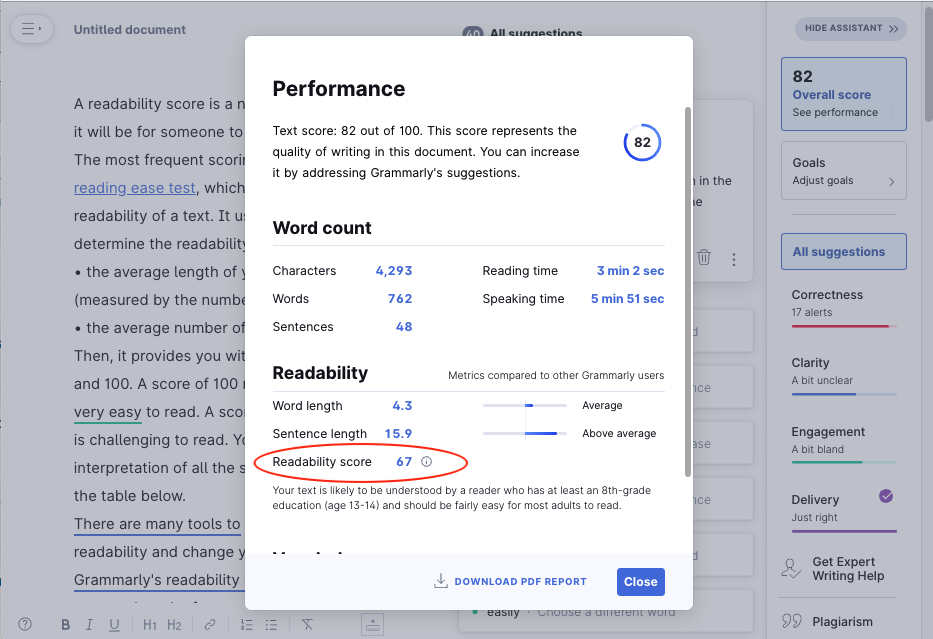A readability score is a number telling how easy it will be for someone to read a particular text. The most frequent scoring is the Flesch reading ease test, which measures the readability of a text. It uses two variables to determine the readability score:
- the average length of your sentences (measured by the number of words)
- the average number of syllables per word
It provides a score between 0 and 100. A score of 100 means your copy is easy to read. A score of 0 means your text is challenging to read. You can see the exact interpretation of all the scores in the table below.
Many tools help you assess your readability and change your scoring. For example, using the Flesch reading-ease test, Grammarly’s readability score is based on the average length of sentences and the number of words in your document.
The higher the number, the easier it is to read the text.
• 100-90 = 5th grade (very easy to read and easily understood by an average 11-year-old)
• 90-80 = 6th grade (easy to read, uses conversational language for consumers)
• 80-70 = 7th grade (fairly easy to read)
• 70-60 = 8th and 9th grade (plain language, easily understood by 14-15-year-olds)
• 60-50 = 10th-12th grade (fairly difficult to read)
• 50-30 = College (difficult to read)
• 30-10 = College graduate (very difficult to read and best understood by university graduates)
• 10-0 = Professional (extremely difficult to read and best understood by university graduates)
